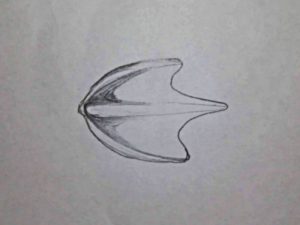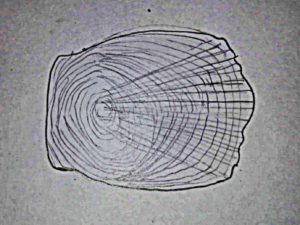Introduction to pisces / ichthys and Freshwater Fish in Sri Lanka
Fish are a class of aquatic vertebrates. The blend of gills, balances and the way that they live just in the water make fish not quite the same as every single other creature. Fish spend all of the totals of their lives in the water and are cold-blooded except for the Tuna family and the Mackerel shark family. Researchers accept that there are more than 24,000 various types of fish on the planet. They extend in size from the biggest, Whale shark at 16 m (51 ft) long, to the tiniest the 8 mm (1/4 in.) Stout Infantfish. Most fish have a skeleton made of bone however a few, similar to sharks, have a skeleton made of cartilage.
Introduction to Freshwater Fish in Sri Lanka
The freshwater ichthyofauna of Sri Lanka contained around 110 species; listed under 20 families and 50-60 species are endemic to the island. species of Sri Lankan fish species are nationally threatened and nine species are globally threatened. The critical threat of harming is endemic fish is habitat degradation and water pollution by increased human activities. there are four recognized zones in Sri Lanka that divided by river basins and geographical changes. Also, Sri Lanka has 24 introduced species of freshwater fishes.
- wet zone
- Mahaweli zone
- dry zone
- intermediate zone

southwest wet zone
Most of the endemic species found in the Lowland wet zone which is densely populated and a vast area covered with Rubber and Tea plantations are harbored fascinating freshwater streams for the endemic endangered fish species. Most endemic fish species require slow-moving water with low sunlight interaction. These perfect conditions are available in the wet zone where most of the species are found. Singaraja, kannaeliya, athwalthota,gilimale,runakanda,yagirala, are some of the rainforests/forest patches located in the wet zone with these perfect conditions. black ruby barb ( bulath hapaya), cherry barb (le thithaya), Ornate Paradisefish (mal pulutta ) and Garra ceylonensis (Gal padi ) are some of the endemic fish species that live in this area.
MAHAWALI ZONE
The second highest fish species diversity is recorded in the Mahaweli zone. Mahaweli river begins from the knuckles mountain range and ends from The Delta located in Trincomalee. the river basin and the sub rivers belong to this zone. mal pethiya ,dumbara pethiya , dumbara kara adaya are some of the species that can only be found in this particular zone.one of the most endangered and endemic species known as gaddaya also only found near maha Nuwara area in mahaweli river.
DRY ZONE
Lack of rain and with few endemic species, the dry zone has a hard environment.man-made lakes, ponds, and tanks are the main habitats for aquatic creatures.lula , walaya,walapoththa are some of the fish species found in this zone.
INTERMEDIATE ZONE
Lowest population of fish fauna is recorded in this zone, rainbow trout is only known fish in this zone which lives in Horton plains.
Scales of Fishes
There is a wide range of kinds of scales that spread the group of different fish. These sorts can be characterized into cosmoid, ganoid, placoid, ctenoid and cycloid types. The scales on fish structure the exoskeleton of the animal, which bodes well, given that “exoskeleton” signifies a skeleton lying on the outside. There are numerous sorts of fish scales, including placoid, ganoid, cycloid, cosmoid, and ctenoid. Scales are little, slender, and cornified structures. They either fit firmly on the body of the creature and can likewise cover at times. They regularly cover like shingles on a rooftop, with their free edges coordinated toward the tail. This successfully encourages them to limit the grating of water and helps in swimming.
cosmoid scales
Cosmoid scales are not found on fish on the planet today, these kinds of scales were a trademark highlight of various fish that have become extinct, for example, ostracoderms and placoderms. Cosmoid scales were additionally found on the groups of projection finned fishes and lungfishes. Originally, cosmoid scales seem as though half-circle scales set extremely near each other.

placoid scales

Did you recognize that sharks, rays, and skates have one element in common? Their placoid scales! These sorts of scales are a trademark highlight of cartilaginous fish and are extremely regular right now. If you somehow happened to see a fish with placoid scales, you would have the option to see that they’re firmly set together on the skin. This frequently gives the outside of these fish a sandpaper-like quality. Be that as it may, on the off chance that you place a placoid scale under a magnifying lens, you would be astounded by the detail of its structure. Under the magnifying instrument, a placoid scale resembles a little snare. Each scale comprises of a spine pointed the regressive way. This spine shoots out of a basal plate that is to some degree rhomboidal fit as a fiddle. This spine is comprised of comparable material as the finish of a human tooth! Fantastic, correct?
ganoid scales

Ganoid scales look like little rhomboids. These jewel molded plates fit one next to the other on the skin of a fish. The whole course of action seems as though tiles on the fish skin, furnishing it with a hard covering. These scales rarely overlap. Ganoid scales are a trademark highlight of chondrosteans, fish with a skeleton made of cartilage, a classification that includes sturgeon. The nearness of these scales is really why a portion of these fish are alluded to as ganoid angles. One captivating thing to note is that the ganoid scales have fluctuating layers in their structure. In dinosaur eels, for instance, these scales are made out of three layers. Then again, in gars, the ganoid scales comprise of just two layers of hard material.
cycloid scales

As the name recommends, cycloid scales are fairly round in appearance, notwithstanding being slim and translucent. The focal point of these scales is thicker, and you can watch a few concentric lines of development. Another fascinating reality about these lines of development is that they show the age of the fish when checked. The more noteworthy the number of concentric rings, the more seasoned the fish. If you somehow happened to watch these scales on the assortment of fish, they would appear as though they’re implanted in the external layer of the skin in an ordinary and covering style. The meager upper layer of these scales is made of bone, while the lower layer is made out of connective tissue. Cycloid scales spread the assortment of bowfin, cod, carp, and certain lungfish.
ctenoid scales

The term ctenidium applies to whatever is brush-like in appearance or structure. In that capacity, ctenoid scales have explicit brush-like projections at the back. In structure, structure, and course of action, they are fundamentally the same as cycloid scales. In any case, ctenoid scales append themselves all the more immovably to the skin. The back pieces of these scales don’t cover and they have a few brush-like teeth. Ctenoid scales spread the collections of struggle and sunfish.
Scales structure the exoskeleton of various fish, yet in addition help in the arrangement. Additionally, aside from these sorts, the other body portions of some fish speak to slight adjustments of these scales. For instance, the stinger of a stingray and shark teeth are both altered placoid scales. In seahorses and pipefish, the scales circuit to frame hard rings that circle the body. Along these lines, despite the fact that these scales end up in the dustbin before pretty much every culinary experience, they are naturally basic and intriguing to examine!
Introduction to Freshwater Fish in Sri Lanka references –
Wikipedia
researchgate.net
Hiranya Sudasinghe. University of Peradeniya







